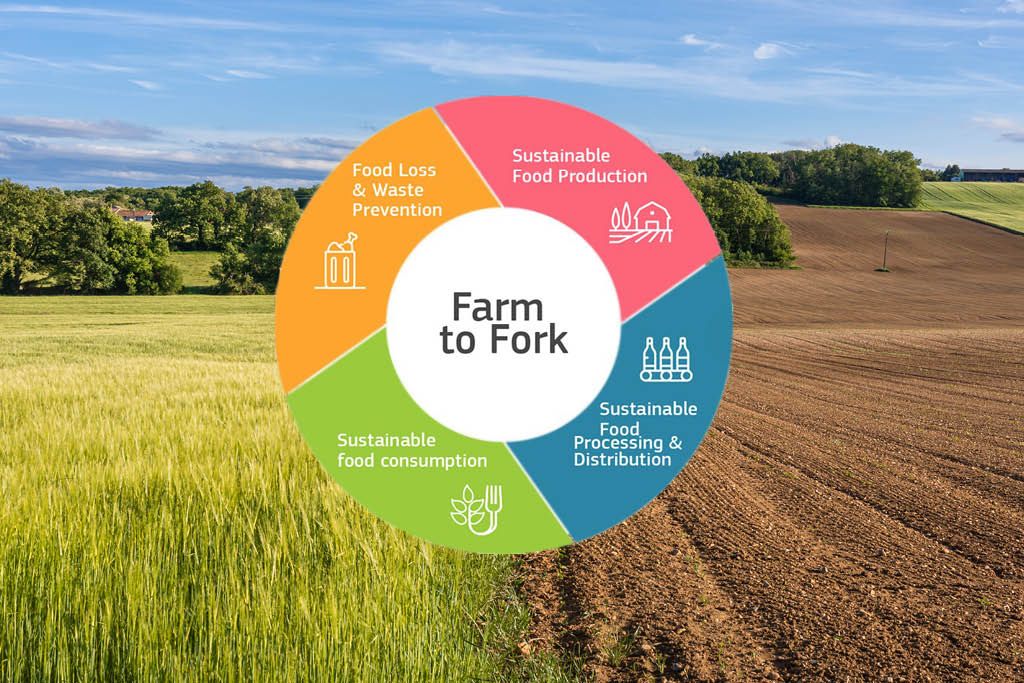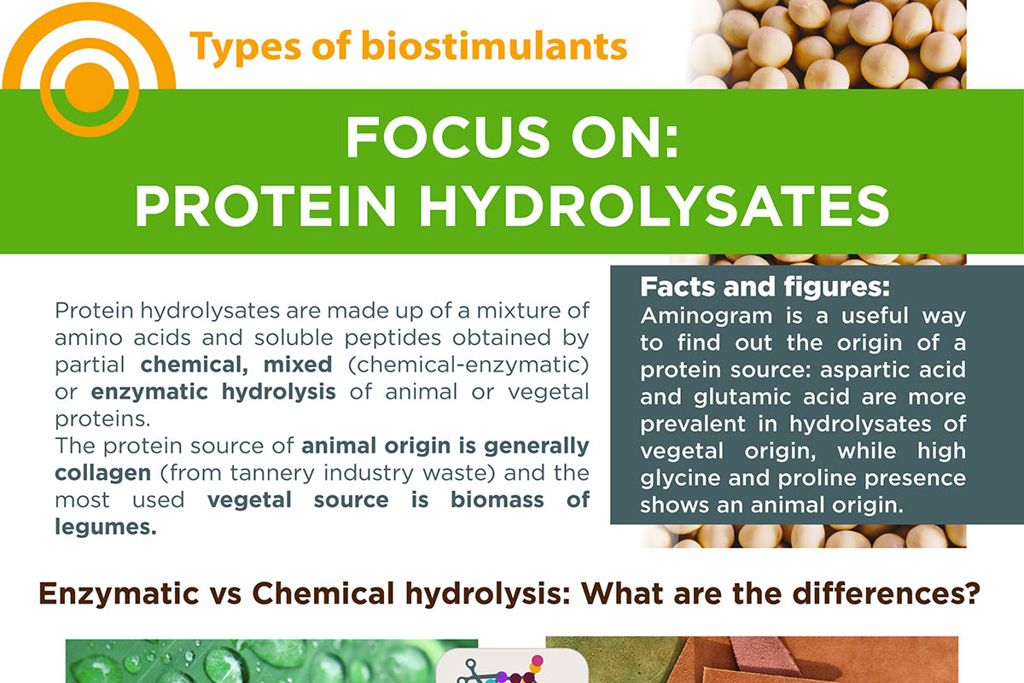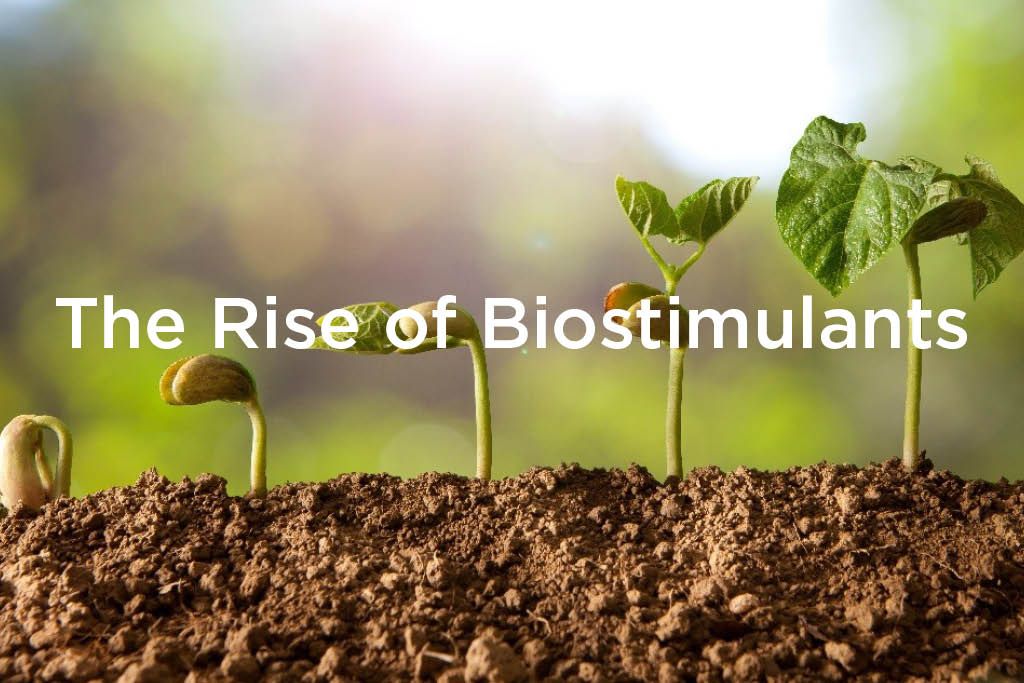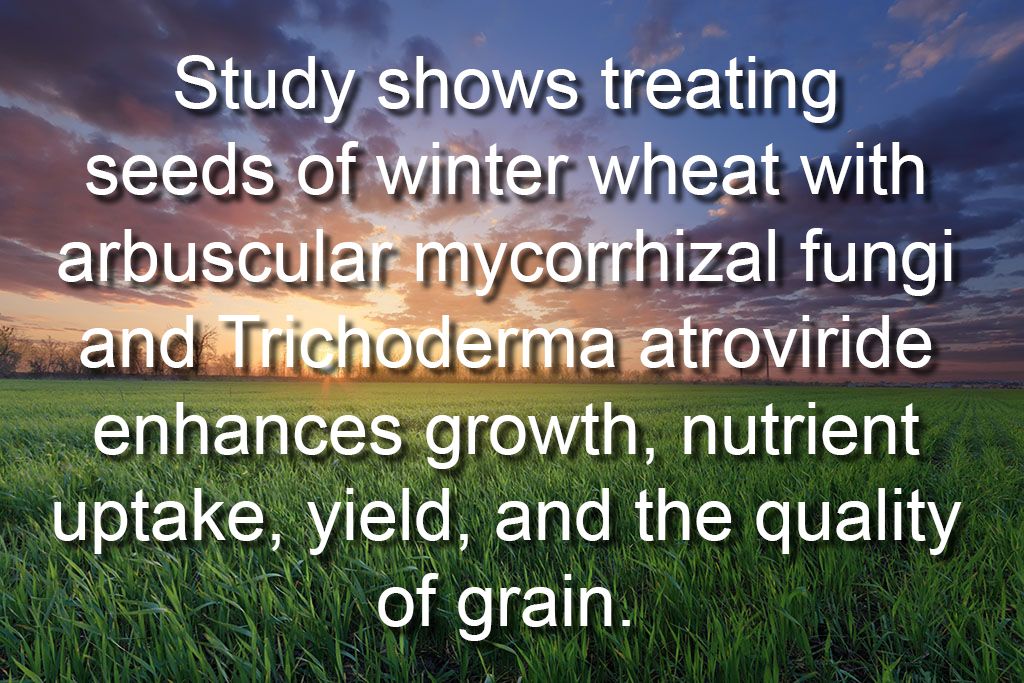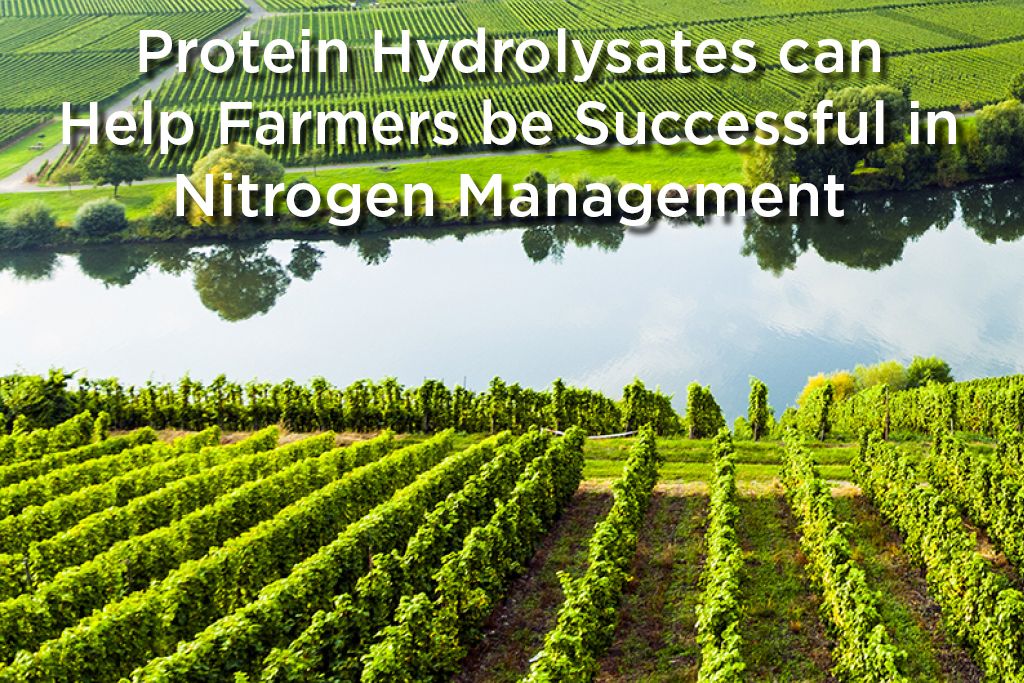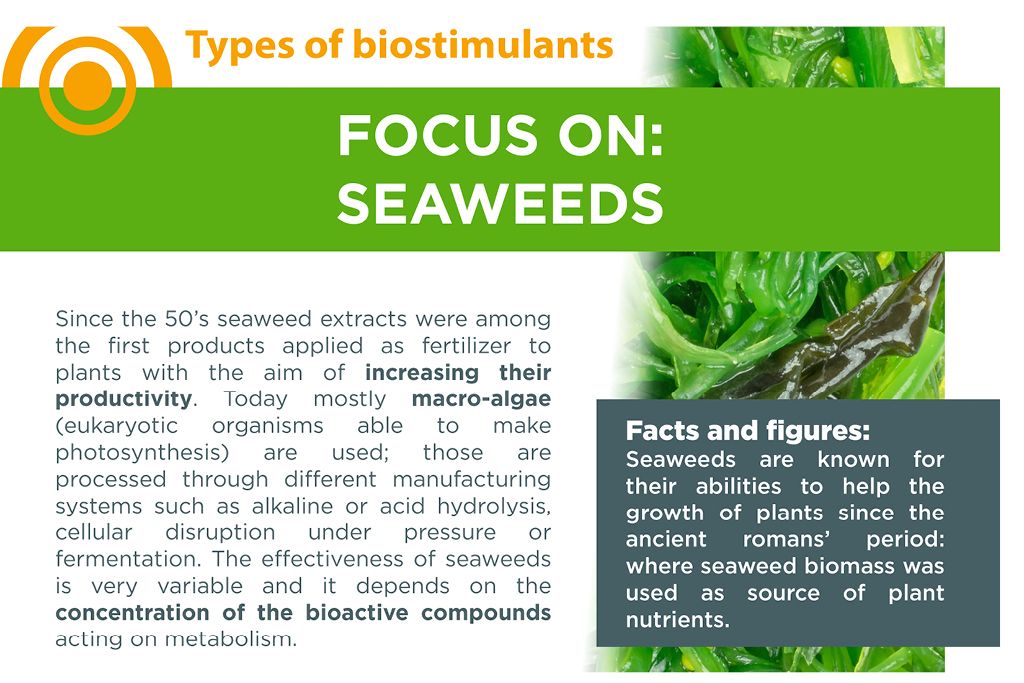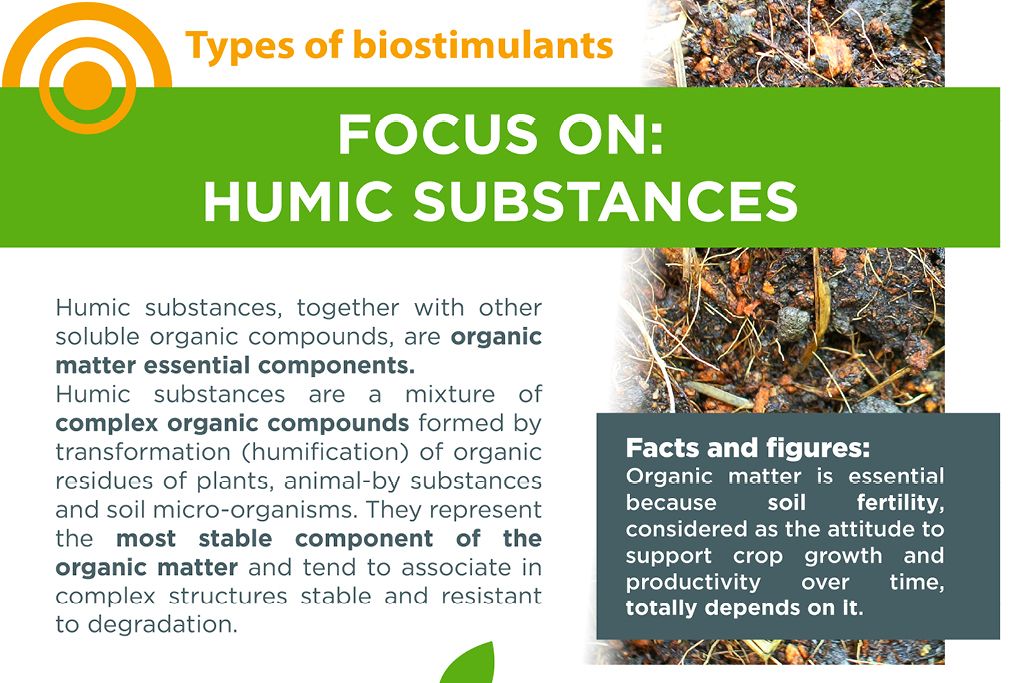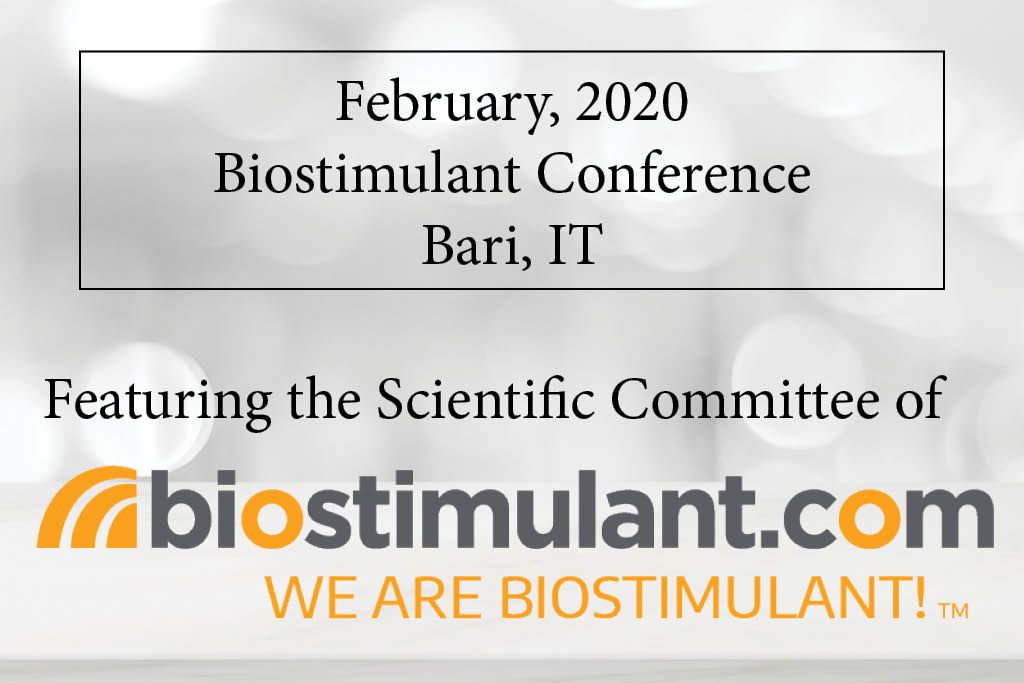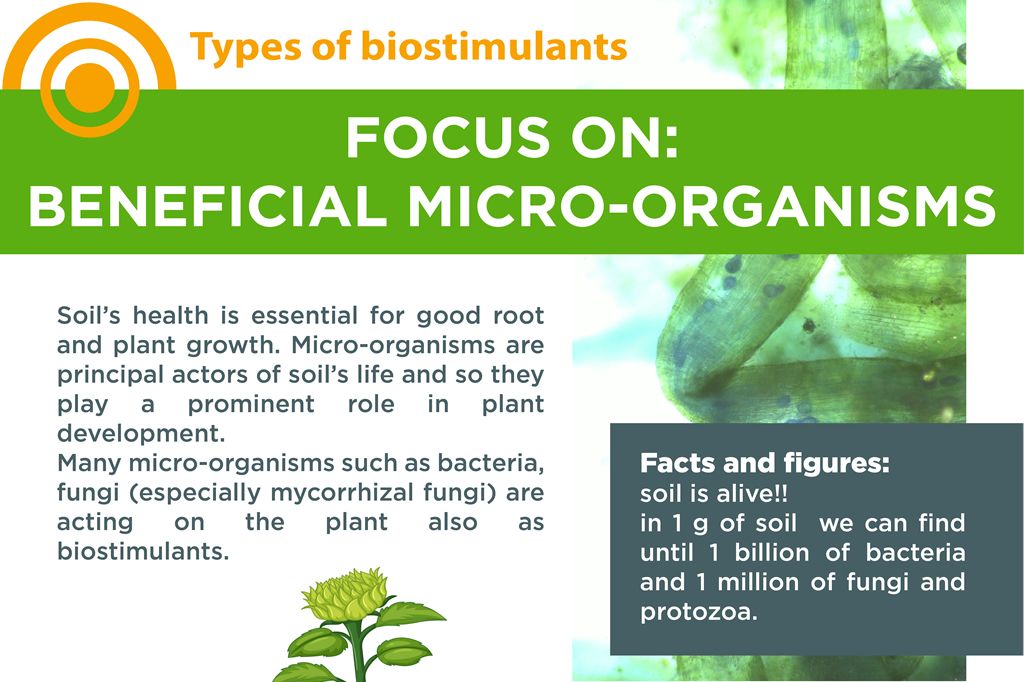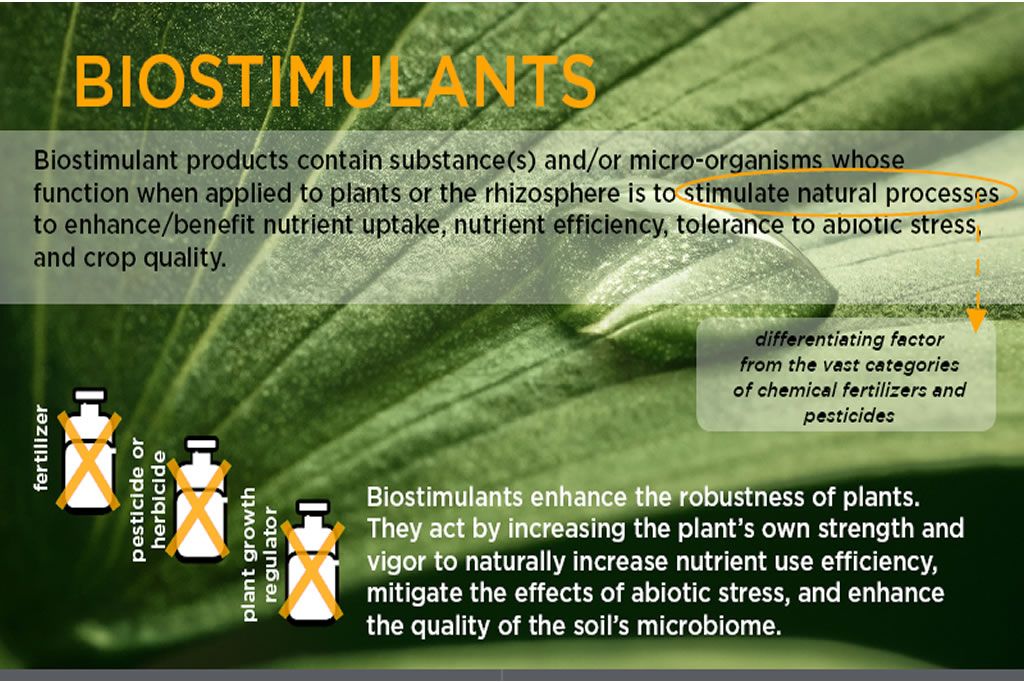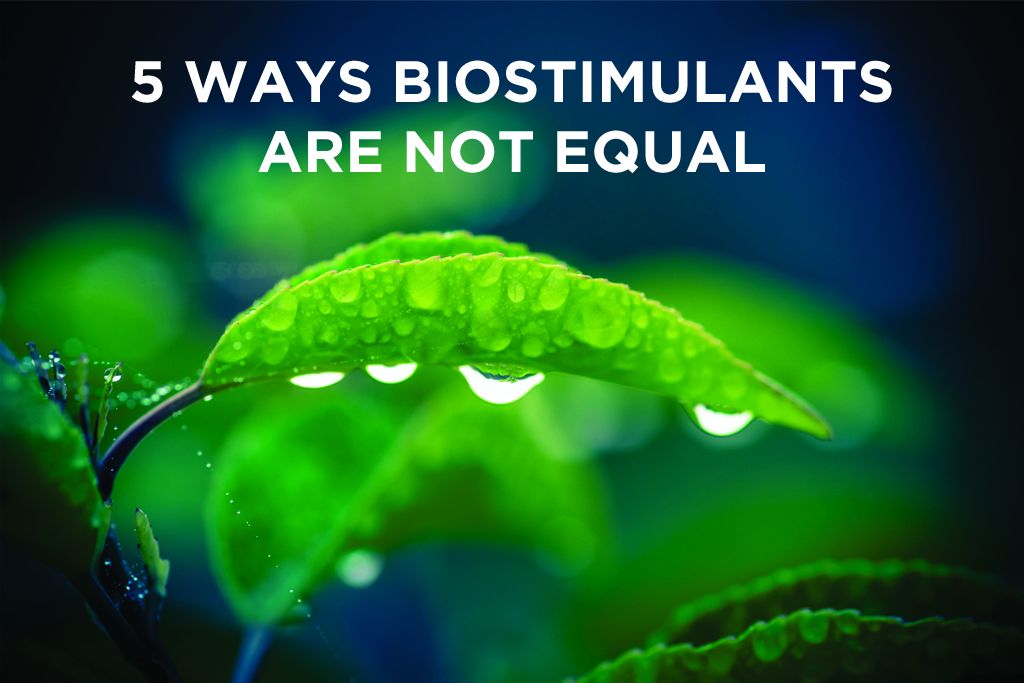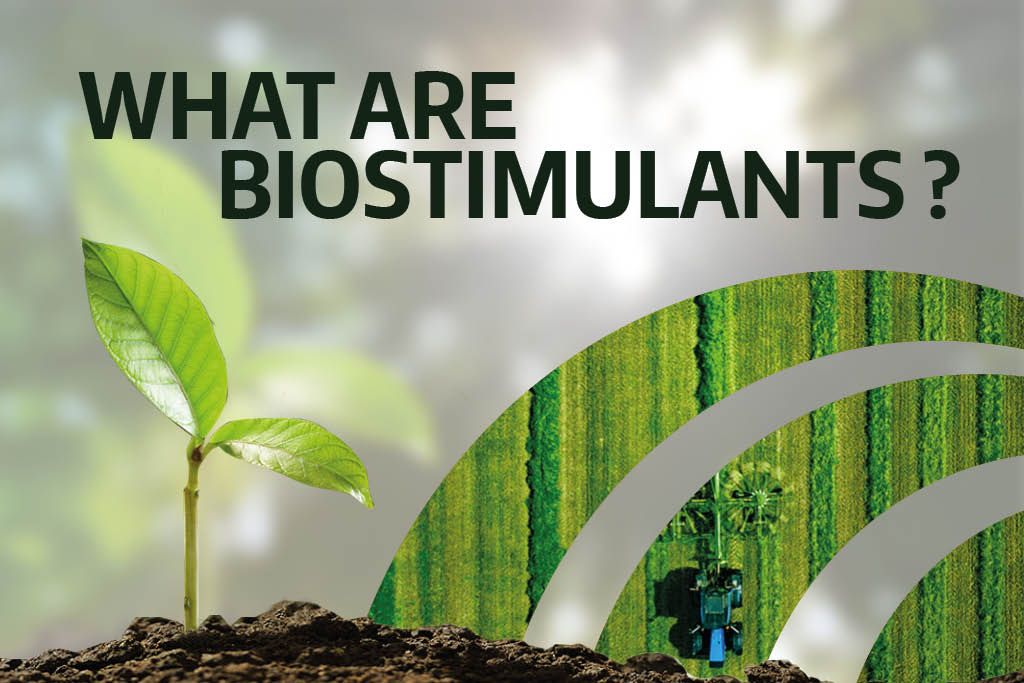BLOG #26
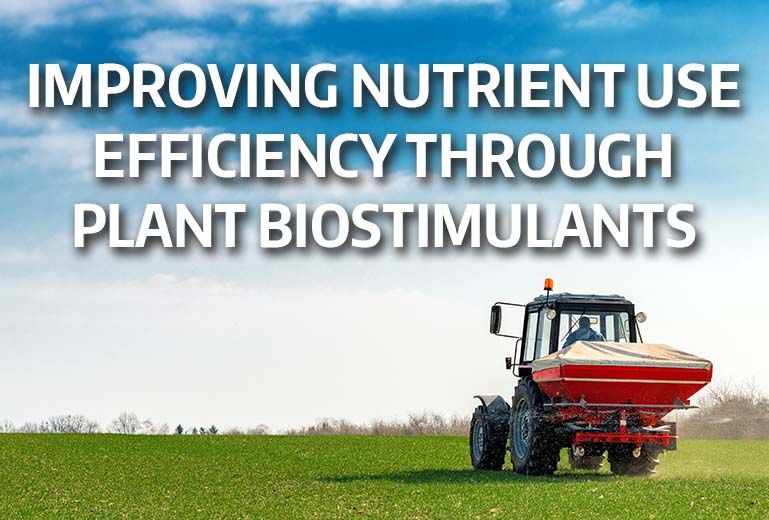
IMPROVING NUTRIENT USE EFFICIENCY THROUGH PLANT BIOSTIMULANTS
The global change in the way of producing in agriculture that took place in the second half of the last century and known as the “Green Revolution” has achieved great results, having met the need for food of many people around the world also thanks to the massive use of chemical fertilizers.
Although agricultural productivity increased this high chemical input approach, has produced multiple environmental damages and contributed to Climate change. Agricultural sector has no choice but to embark on a greener revolution which means increase crop productivity and quality applying sustainable practices and reducing environmental footprint.
Worldwide we are experiencing shortage of raw materials and difficulties in logistics which will delay and increase the price of commodities.
In this scenario, sustainable fertilization management is essential to increase the overall performance of cropping systems by providing economically optimum nourishment to the crop while minimizing nutrient losses from the field and supporting agricultural system sustainability by increasing Nutrient Use Efficiency (NUE).
NUTRIENT USE EFFICIENCY
NUE appears to be a simple term. However, a meaningful and operational definition has considerable complexity due to the number of potential nutrient sources (soil, fertilizer, manure, atmosphere (aerial deposition), etc.), and the multitude of factors influencing crop nutrient demand (crop management, genetics, weather).
Six Common Measures of NUE (after Dobermann, 2007):
1. Partial factor productivity (PFP) is a simple production efficiency expression, calculated in units of crop yield per unit of nutrient applied.
PFP= Y/F
Y= yield of harvested portion of crop with nutrient applied
F= amount of nutrient applied
2. Agronomic efficiency (AE) is calculated in units of yield increase per unit of nutrient applied. It more closely reflects the direct production impact of an applied fertilizer and relates directly to economic return. The calculation of AE requires knowledge of yield without nutrient input, so is only known when research plots with zero nutrient input have been implemented on the farm.
AE= (Y-Y0) / F
Y= yield of harvested portion of crop with nutrient applied
Y0= yield with not nutrient applied
F= amount of nutrient applied
3. Partial nutrient balance (PNB) is the simplest form of nutrient recovery efficiency, usually expressed as nutrient output per unit of nutrient input (a ratio of “removal to use”). Less frequently it is reported as “output minus input.”
PNB= UH/F
UH= nutrient content of harvested portion of the crop
F= amount of nutrient applied
4. Apparent recovery efficiency (RE) is one of the more complex forms of NUE expressions and is most commonly defined as the difference in nutrient uptake in above-ground parts of the plant between the fertilized and unfertilized crop relative to the quantity of nutrient applied. It is often the preferred NUE expression by scientists studying the nutrient response of the crop. Like AE, it can only be measured when a plot without nutrient has been implemented on the site, but in addition requires measurement of nutrient concentrations in the crop.
RE= (U-U0) / F
U= total nutrient uptake in aboveground crop biomass with nutrient applied
U0 = nutrient uptake in aboveground crop biomass with no nutrient applied
F= amount of nutrient applied
5. Internal utilization efficiency (IE) is defined as the yield in relation to total nutrient uptake. It varies with genotype, environment and management. A very high IE suggests deficiency of that nutrient. Low IE suggests poor internal nutrient conversion due to other stresses (deficiencies of other nutrients, drought stress, heat stress, mineral toxicities, pests, etc.).
IE= Y/U
Y= yield of harvested portion of crop with nutrient applied
U= total nutrient uptake in aboveground crop biomass with nutrient applied.
6. Physiological efficiency (PE) is defined as the yield increase in relation to the increase in crop uptake of the nutrient in above-ground parts of the plant. Like AE and RE, it needs a plot without application of the nutrient of interest to be implemented on the site. It also requires measurement of nutrient concentrations in the crop.
PE= (Y-Y0) / (U-U0)
Y= yield of harvested portion of crop with nutrient applied
Y0= yield with not nutrient applied
U= total nutrient uptake in aboveground crop biomass with nutrient applied.
U0 = nutrient uptake in aboveground crop biomass with no nutrient applied.
SIX COMMON MEASURES OF NUE
| PARTIAL FACTOR PRODUCTIVITY | PFP= Y/F | How productive is this cropping system in comparison to its nutrient input? |
| AGRONOMIC EFFICIENCY | AE= (Y-Y0)/F | How much productivity improvement was gained by use of nutrient input? |
| PARTIAL NUTRIENT BALANCE | PNB= UH/F | How much nutrient is being taken out of the system in relation to how much is applied? |
| APPARENT RECOVERY EFFICIENCY | RE= (U-U0)/F | How much of the nutrient applied did the plant take up? |
| INTERNAL UTILIZATION EFFICIENCY | IE= Y/U | What is the ability of the plant to transform nutrients acquired from all sources into economic yield (grain, etc.)? |
| PHYSIOLOGICAL EFFICIENCY | PE= (Y-Y0)/(U-U0) | What is the ability of the plant to transform nutrients acquired from the source applied into economic yield? |
NUE FROM FARMERS’ STANDPOINT
From farmers’ standpoint, without neglecting the importance of the environmental implications of a low NUE, it is particularly interesting to link this indicator to the crop yield. In this case, NUE is generally defined as the yield of harvestable product per unit of nutrient available from the soil and fertilizer. It is the product of two physiological factors:
I. Nutrient uptake efficiency, defined as the amount of nutrient uptake by the crop per unit of nutrient available to the crop.
II. Nutrient utilization efficiency, defined as the amount of nutrient uptake by the crop per unit of nutrient available to the crop.
NUE = Yield/Nutrient supplied or available
NUE = N Uptake Efficiency x N Utilization Efficiency
N Uptake Efficiency = N content in plant/N supplied or available
N Utilization Efficiency = Yield/N content in plant
This subdivision allows to evaluate which phenomenon reduces the NUE, and therefore understand if there are any limitations in the nutrient uptake or utilization.
HOW DO BIOSTIMULANTS IMPROVE NUE?
Plant biostimulants improve NUE by enhancing both the uptake and utilization efficiency of nutrients.
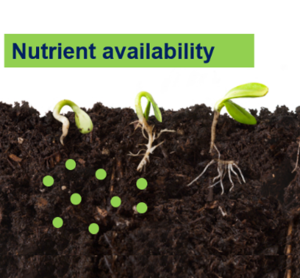
NUTRIENT AVAILABILITY
For instance, in soil treated with protein hydrolisates (PHs), nutrient bioavailability for plant uptake is increased by:
(1) the formation of metal-amino acids/peptides which prevents nutrient insolubilization (Fe, Zn, Mn, Cu);
(2) reduction of micronutrients in forms more available for plant uptake (e.g., Cu2+ to Cu+ or Fe3+ to Fe2+), thanks to the reductant activity of some amino acids;
(3) stimulation of beneficial microorganisms like nitrogen-fixing bacteria, nutrient-solubilizing bacteria/fungi.
Also, beneficial microorganisms have the ability to improve nutrient availability for plant uptake through different ways:
(1) Increase of the soil volume accessible to plant roots
(2) Supply nitrogen to plants
(3) Solubilization of plant nutrients
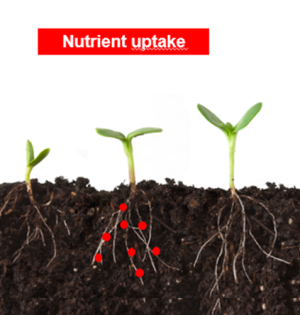
NUTRIENT UPTAKE
PHs can enhance nutrient uptake by:
(1) promoting the fine root growth and thereby the roots capacity for nutrient uptake;
(2) stimulating root enzymes involved in nutrient uptake (e.g., ferric-chelate reductase activity);
(3) upregulating the genes encoding for nutrient transporters (e.g., nitrate transporters). Moreover, PHs can increase translocation of micronutrients within the plant as a result of the metal-amino acids/peptides complex formation.
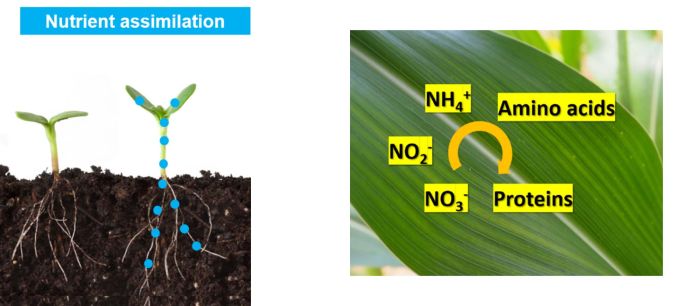
NUTRIENT ASSIMILATION
A lot of research demonstrated that microbial and non-microbial biostimulants upregulated genes encoding for enzymes involved in the plant assimilation of inorganic nutrients such as nitrates.
BIOSTIMULANTS INCREASE NUE: EXPERIMENTAL DATA
Non-microbial and microbial plant biostimulants may positively influence nutrient use efficiency (NUE), in particular nitrogen (N) which is one of most important macronutrient limiting plant growth as well as one of the main costs for farmers. Several experiments have been carried out to measure the increase of NUE after the application of plant biostimulants.
Carrillo et al.3 demonstrated that weekly foliar applications of a legume derived protein hydrolisate increased the marketable yield (+33% and +24%) of greenhouse spinach plants even under suboptimal nitrogen fertilization levels (0 and 15 kg/ha of N as ammonium nitrate) compared to the untreated. This was associated to the presence of small peptides which act as signaling molecules eliciting auxin- and/or gibberellin-like activities on both leaves and roots thus inducing a “nutrient acquisition response” that enhances nutrients acquisition and assimilation. In this experiment, foliar applications of protein hydrolysate increased NUE at all nitrogen fertilizer rate, with the highest value +25% with the lower nitrogen rate (15 kg/ha) where NUE was 0,56 in the control and 0,70 in the biostimulant treatment.
Rouphael et al.4, the synergistic action through the application of microbial (Trichoderma virens) and non-microbial biostimulant (vegetal biopolymer containing amino acids, peptides and vitamins) was demonstrated on greenhouse lettuce grown with three N conditions: sub-optimal, optimal and supra-optimal (0, 70 and 140 kg/ha). Lettuce grown under non-fertilized conditions showed an increase in marketable yield when inoculated with T. virens alone (45%) and a greater increase with both microbial and non-microbial biostimulant (67%). The beneficial effect of plant biostimulant was less pronounced under optimal N condition and absent under luxurious N conditions. The authors concluded that, based on the improved fresh yield and NUE in greenhouse lettuce plants, treatment with plant biostimulants improved not only the chlorophyll synthesis and mineral status but also the synthesis and accumulation of antioxidant metabolites that were responsible for reactivating the photosynthetic activity and consequently the agronomic performance.
The urgent need to reduce the use of synthetic fertilizers while increasing the NUE and maximizing crop productivity is a great challenge for modern agriculture. Furthermore, the increase of commodities prices, which is occurring globally, opens up the need to implement agronomic strategies to reduce the application dose of fertilizers safeguarding, at the same time, crop productivity and the profitability of farmers. Plant biostimulants represent a promising strategy to boost sustainable agricultural production thanks to their capacity of improving directly or indirectly nutrient use efficiency of crops especially under low nutrient availability.
1. “Managing Water and Fertilizer for Sustainable Agricultural Intensification” by IFA (2014). Chapter 1, Nutrient/fertilizer use efficiency: measurement, current situation and trends: Paul Fixen, Frank Brentrup, Tom Bruulsema, Fernando Garcia, Rob Norton and Shamie Zingore
2. “Biostimulants for sustainable crop production”: Youssef Rouphael; Patrick du Jardin; Patrick Brown; Stefania De Pascale and Giuseppe Colla (ed), 2020, Burleigh Dodds Science Publishing, Cambridge, UK
3. “Morphological and Physiological Responses Induced by Protein Hydrolysate-Based Biostimulant and Nitrogen Rates in Greenhouse Spinach”: Petronia Carillo, Giuseppe Colla, Giovanna Marta Fusco, Emilia Dell’Aversana, Christophe El-Nakhel, Maria Giordano, Antonio Pannico, Eugenio Cozzolino, Mauro Mori, Hélène Reynaud, Marios C. Kyriacou, Mariateresa Cardarelli and Youssef Rouphael (Agronomy – 2019)
4. Appraisal of Combined Applications of Trichoderma virens and a Biopolymer-Based Biostimulant on Lettuce Agronomical, Physiological, and Qualitative Properties under Variable N Regimes: Rouphael, Y.; Carillo, P.; Colla, G.; Fiorentino, N.; Sabatino, L.; El-Nakhel, C.; Giordano, M.; Pannico, A.; Cirillo,V.; Shabani, E.; et al. (Agronomy – 2020)
5. Toward a Sustainable Agriculture Through Plant Biostimulants: From Experimental Data to Practical Applications: Youssef Rouphael and Giuseppe Colla (Agronomy – 2020)
Powered by Hello Nature


